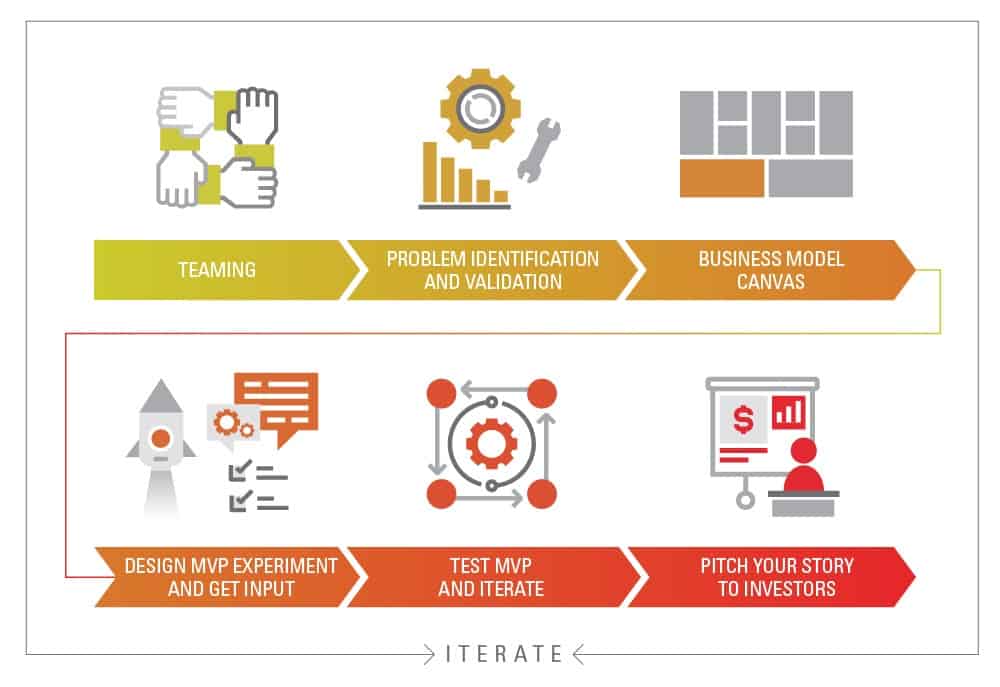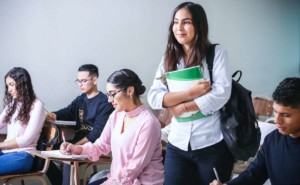Is Entrepreneurship the Antidote to Student Anxiety?

By: Tom Leonard
Across the country, educators have spent this year grappling with the toughest challenges of their professional lives. But as disruptive as 2020 has been for educators, it has been twice so for high school-age students, who are just beginning to develop the adaptability and resilience needed for a time like this. We had reasons to be concerned about the emotional well-being of our students long before COVID-19, given the steadily increasing rate of teen anxiety. Unfortunately, the uncertainty we’re living with today will only fuel their apprehension as many are being forced to question things they had taken for granted — from paying for college to having a caring adult in their lives.
For years now, schools have spent time and resources on an aspect of education beyond academics: social and emotional well-being. Yet effective social/emotional programming at the high school level remains elusive, as administrators struggle to force a non-academic subject into a traditional high school model focused on college and career readiness.
However, we’re seeing that entrepreneurship programs can “flip the script” on anxiety. Entrepreneurship education isn’t just about teaching students how to make money or turn a profit. It’s about empowering them to become agents of change and equipping them to solve problems, empathize with people who might not look like them, and pick themselves up after adversity.
At Westlake High School in Austin, Texas, that begins with students asking an important question: “What bugs me in my life?” The idea is that if it bugs the student, it probably bugs other people, too. Through a course called INCubatoredu, students consider whether a solution to that problem could help not just themselves, but their peers, their community, and even the world.
The program isn’t a simulation. During the year-long course, students receive an authentic entrepreneurship experience. Once they have a solution in hand, the students test it out. They figure out what they got right — and perhaps more importantly, the assumptions they got wrong — improving the outcome with every experiment they run. Then they test their assumptions and hypotheses through a series of experiments. After learning more about their business model and adjusting to marketplace dynamics, the students look for investors who can help them bring their products to the market.
Sometimes the money is there. High school entrepreneurship programs have been the launching pad for many full-time business enterprises, some of which exist long after graduation.
Take, for instance, Trashbots, a project borne out of the INCubatoredu program at Westlake. In 2016, brothers Rohit and Sidharth Srinivasan developed a robot-building curriculum for K-12 students — a fun, exciting way to get kids interested in engineering and problem-solving through productive play. Their idea included about 50 hours of training on coding, programming, and other STEM skills. The end product is an actual robot that can kick a ball or play music.
Like all INCubatoredu participants, the brothers pitched their idea to potential investors, who offered seed money and, eventually, a spot in a local business accelerator program. Even before they could graduate high school, these teenage entrepreneurs were getting their products into dozens of schools, earning money for themselves even as they prepared students for jobs in a tech-focused economy.
Four years after developing Trashbots, the brothers are essentially full-time business owners — Rohit also is a junior at the University of Texas, with Sidharth deferring acceptance to Stanford University. In September, they announced that Trashbots was closing in on its goal of raising another round of funding from investors, money they plan to spend on supply chains and inventory, marketing costs, and new hires.
What happened to the Srinivasan brothers is the sort of outcome we want for all of our INCubatoredu teams at Westlake. But that’s not the point of the program. Regardless of the success of the idea, every student entrepreneur experiences the same setbacks and disappointments as their grownup counterparts. Maybe their initial solutions don’t work the way they were intended. Maybe investors don’t line up to fund their projects as hoped. Maybe customers don’t buy it once it hits the market. Whatever the cause, their experiences become perfect opportunities to teach students about overcoming adversity and rebounding from setbacks in the safe environment of the classroom.
What entrepreneurship programs do is get students invested in solving the problem, which gives them a sense of purpose and a feeling of control, transforming despair and anxiety into empowerment. If they find like-minded kids who are also invested, then they’ll fight to bring that idea to life, believing it can change the world.
And that instills in teenagers a sense of purpose and the belief in their ability to navigate uncertainty, which is exactly what they need right now.
For more, see:
- Digital Credentials: A Better Way to Capture and Communicate Learning
- Distance Learning: Boosting College-, Career- and Life-Readiness
- Virtual Agreements Help Mitigate Cheating in My Online Classroom
Dr. Tom Leonard has been superintendent of Eanes Independent School District in Austin, Texas, since 2014.
Stay in-the-know with innovations in learning by signing up for the weekly Smart Update.







0 Comments
Leave a Comment
Your email address will not be published. All fields are required.